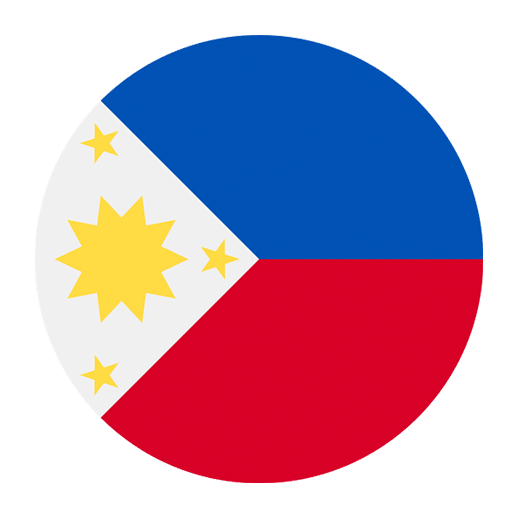The Filipino language, more commonly known as Tagalog, has a rich historical context that is deeply intertwined with the cultural, social, and political development of the Philippines. Understanding its role in history offers valuable insights into the evolution of the Filipino identity and provides important lessons for language learners. By delving into the origins, influences, and transformations of Tagalog, we can appreciate its significance and better understand its contemporary usage.
The Origins of Tagalog
Tagalog is part of the Austronesian language family, one of the world’s largest language families, which includes languages spoken in Taiwan, Southeast Asia, the Pacific Islands, and even Madagascar. The Austronesian roots of Tagalog are evident in its vocabulary, phonology, and syntax, which share similarities with other languages in the family.
The earliest written records of Tagalog date back to the 9th century, with the Laguna Copperplate Inscription, an artifact found in 1989 that contains a mix of Old Malay, Old Javanese, Sanskrit, and Old Tagalog. This inscription provides evidence of the early existence and use of Tagalog, as well as its interaction with other languages in the region.
Tagalog During Spanish Colonization
The arrival of Spanish colonizers in the Philippines in 1521 marked a significant turning point in the history of Tagalog. Over the next three centuries, Spanish influence permeated Filipino society, including its language. Spanish missionaries, who aimed to convert the local population to Christianity, were among the first to study and document Tagalog. They created dictionaries, grammars, and religious texts in Tagalog, which contributed to its standardization and preservation.
During this period, Tagalog absorbed a substantial number of Spanish loanwords, especially in areas such as religion, government, education, and daily life. For example, the Tagalog words for “church” (iglesia), “school” (escuela), and “table” (mesa) are derived from Spanish. This linguistic exchange enriched Tagalog and expanded its vocabulary, making it a more versatile and expressive language.
Tagalog Literature Under Spanish Rule
Spanish colonization also gave rise to a flourishing Tagalog literature. Early Tagalog literary works were primarily religious in nature, such as the “Pasyon,” a narrative poem about the passion, death, and resurrection of Jesus Christ. However, secular literature also emerged, with notable works like “Florante at Laura,” an epic poem written by Francisco Balagtas in 1838. This literary masterpiece, written in Tagalog, is considered one of the greatest works of Philippine literature and showcases the beauty and depth of the language.
The American Era and the Rise of Filipino Nationalism
The end of Spanish rule in 1898 and the subsequent American colonization brought about further changes to the linguistic landscape of the Philippines. The Americans introduced English as the medium of instruction in schools, which significantly impacted the use and status of Tagalog. English became the language of government, education, and business, while Tagalog and other local languages were relegated to secondary roles.
Despite this, the early 20th century saw a resurgence of Filipino nationalism, with Tagalog playing a central role in the movement. Filipino nationalists, such as Manuel L. Quezon, advocated for the adoption of a national language to unite the diverse linguistic groups in the Philippines. In 1937, Tagalog was chosen as the basis for the national language, which was later renamed “Pilipino” and eventually “Filipino.”
Tagalog in Filipino Education and Media
The promotion of Tagalog as the national language led to its increased use in education, media, and literature. Schools began to teach Tagalog, and it became a subject in the curriculum alongside English. Newspapers, magazines, and radio programs started to feature content in Tagalog, which helped to popularize the language and make it more accessible to the general population.
The mid-20th century also saw the rise of Filipino cinema, with Tagalog films gaining widespread popularity. Iconic movies like “Giliw Ko” (1939) and “Biyaya ng Lupa” (1959) showcased Tagalog as a language of artistic expression and storytelling. This period marked a golden age for Tagalog cinema, contributing to the cultural and linguistic identity of the Filipino people.
Tagalog in the Contemporary Philippines
In contemporary times, Tagalog remains a vital and dynamic language in the Philippines. It is one of the two official languages, alongside English, and serves as the national language under the name Filipino. Tagalog is spoken by over 28 million people as their first language and by an additional 45 million as a second language. It is the predominant language in Metro Manila and the surrounding provinces, and it is widely understood throughout the country.
The influence of Tagalog extends beyond the borders of the Philippines, with Filipino communities around the world maintaining their linguistic and cultural heritage. In countries like the United States, Canada, and Saudi Arabia, Tagalog is among the most spoken languages, reflecting the global Filipino diaspora.
Tagalog and Digital Technology
The advent of digital technology and social media has further transformed the use of Tagalog. The internet has provided new platforms for Tagalog speakers to connect, share, and create content. Social media sites, blogs, and YouTube channels feature a wealth of Tagalog material, ranging from educational content and news to entertainment and personal vlogs. This digital presence has made Tagalog more visible and accessible to younger generations and non-Filipino speakers interested in learning the language.
The Role of Tagalog in Language Learning
For language learners, understanding the historical context of Tagalog can enhance the learning experience in several ways. Firstly, it provides a deeper appreciation of the language’s richness and complexity. Tagalog is not just a means of communication; it is a repository of the Filipino people’s history, culture, and identity. By learning Tagalog, students gain access to a wealth of literary, artistic, and cultural expressions that reflect the Filipino experience.
Secondly, knowledge of Tagalog’s historical context helps learners understand its linguistic features and vocabulary. For example, recognizing the influence of Spanish on Tagalog can aid in understanding loanwords and their usage. Similarly, familiarity with the Austronesian roots of Tagalog can provide insights into its grammatical structure and phonology.
Practical Tips for Learning Tagalog
1. **Immerse Yourself in Tagalog Media**: Exposure to Tagalog media, such as movies, TV shows, music, and podcasts, can help learners develop their listening and comprehension skills. Watching Tagalog films or listening to Tagalog songs can also provide cultural context and make the learning process more enjoyable.
2. **Practice Speaking with Native Speakers**: Engaging in conversations with native Tagalog speakers is one of the most effective ways to improve speaking and listening skills. Language exchange programs, online forums, and social media groups offer opportunities to connect with Tagalog speakers and practice the language in real-life situations.
3. **Use Language Learning Apps and Resources**: There are numerous apps and online resources designed specifically for learning Tagalog. Apps like Duolingo, Memrise, and Drops offer interactive lessons and exercises, while websites like Tagalog.com provide comprehensive language guides, vocabulary lists, and practice materials.
4. **Study Tagalog Grammar and Vocabulary**: Understanding the grammatical structure and vocabulary of Tagalog is essential for building a strong foundation in the language. Textbooks, grammar guides, and online courses can provide structured lessons and explanations to help learners grasp the fundamentals of Tagalog.
5. **Read Tagalog Literature and Texts**: Reading books, articles, and other written materials in Tagalog can improve reading comprehension and expand vocabulary. Starting with simple texts, such as children’s books or short stories, and gradually progressing to more complex literature can make the learning process manageable and rewarding.
The Future of Tagalog
As the Philippines continues to evolve and adapt to global changes, the role of Tagalog remains significant. Efforts to promote and preserve the language are ongoing, with government initiatives, educational programs, and cultural organizations working to ensure its continued vitality. The integration of Tagalog into digital platforms and the global reach of Filipino communities further contribute to its resilience and growth.
In conclusion, understanding the role of Tagalog in historical context provides valuable insights into the language’s development and significance. For language learners, this knowledge enriches the learning experience and fosters a deeper connection to the Filipino culture and identity. By appreciating the historical journey of Tagalog, learners can embrace the language with a sense of purpose and pride, contributing to its enduring legacy.

